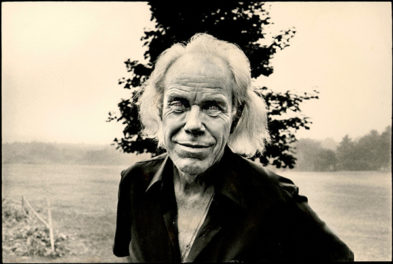There are digital photographers. And then there’s Luther Gerlach.
In the time it took you to read that last paragraph, you could have snapped six digital photos. It would take Luther half a day to make that many images—on a good day. Why? Because he still makes images the way photographers made them in 1851: using the wet-plate collodion process, a painstaking, multi-step technique that uses a chemical solution on glass plates to capture images with remarkable depth of detail.
At the Getty Villa on a Tuesday morning, preparing for his artist-at-work demonstrations on 19th-century photography, Luther stares intently at his watch and counts the seconds: 1 … 2… 3…. He begins to show anxiety as a light wind rolls through the Outer Peristyle. Faced with a 30-minute exposure on his glass plate, a breeze, even a mild one, can make the photograph look fuzzy or out of focus.
The damage is later confirmed when Luther, with a look of disappointment, steps from the makeshift darkroom in his van and examines the unwanted “soft” look of the trees. While his two assistants head for lunch, he insists on making “just one more” and hurries up to his antique camera to try again.
Despite the slowness of the process, rushing is a big part of the job. Using the wet-plate collodion process means keeping the glass wet. Luther needs to run quickly as possible from his camera to the darkroom to make sure it doesn’t dry up. Fast running times for Luther mean pristine images.
The process is dirty work, too: the wet-plate process leaves his hands smeared with black, brown, and purple spots from the chemicals and liquids. And we all come away sunburned from working outdoors for nine hours.
In a way, though, Luther has it easy compared to the photographers whose work is on view in In Search of Biblical Lands: From Jerusalem to Jordan in Nineteenth-century Photography. He has access to clean water, consistently prepared chemicals, and, a gas-powered vehicle—luxuries that his predecessors, with their horse-drawn darkrooms and hand-mixed photographic brews, would have envied.




Thanks for this, this is really inspiring work.
It’s hard to imagine what it’s like to work with a 30 min exposure…